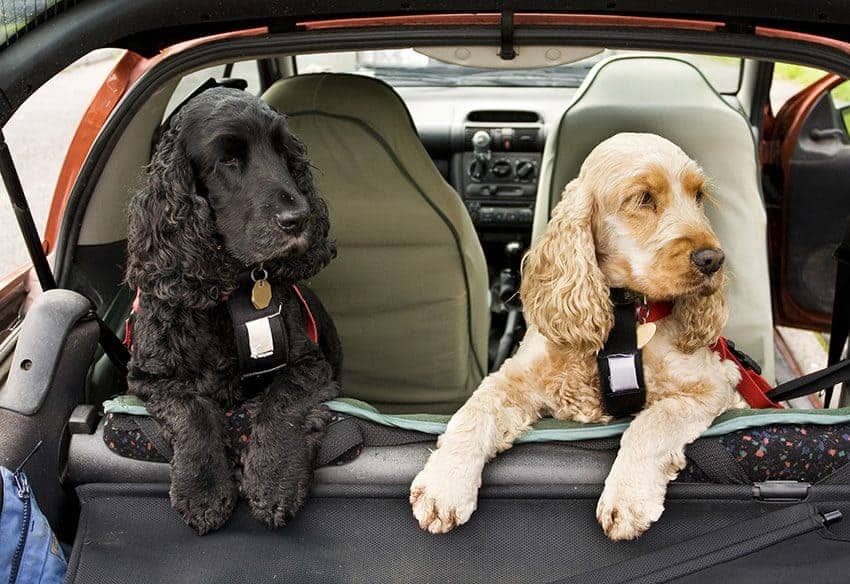
1. Train reluctant travellers
With dogs that are car travel novices, or those that become anxious at the jangle of car keys, start by getting them accustomed to your car. Under supervision and in a safe area where they can’t make a fast exit, let them explore inside your parked vehicle in their own time. Next, spend a few minutes each day in the stationary car with your dog, offering them part of their daily food allowance or a tasty treat or two, so they begin to associate positive experiences with it. Once your dog connects your car with good things, they should happily hop in. Build on this by taking your canine companion on short trips to exciting places such as the park or woods. As their confidence grows, you can then gradually increase the duration of trips.
2. Burn off excess energy
It’s a really good idea to take your dog on a long walk before your trip. This ensures that their energy levels are depleted and they are happy to lie down and snooze once you’re on the road.
3. Reduce the risk of car sickness
Dogs can get car sick just the same as humans, so don’t feed a large meal right before setting off. A light snack, a couple of hours before departure, is ideal. To help with motion sickness, some dogs may benefit from travelling on a pet beanbag. These create a safe spot to nestle in, without rolling about too much with the motion of the vehicle. A few favourite toys and familiar bedding can also help your dog feel more settled.
4. Keep it cool for dogs
As canines sport fur coats, it’s an absolute must to keep the on-board temperature cool. Turn on the air con or keep windows open an inch or two. If It’s very hot and sunny, sun blinds on the windows may also be required. However, never be tempted to let your dog hang their head out of the window. Debris from the road could damage their nose, mouth and eyes, which were not designed to travel at 70mph. And it just doesn’t bear thinking about what could happen if you had to brake quickly or were involved in a collision…
DID YOU KNOW?
According to PDSA, a crash at 30mph would hurl an unrestrained Border Collie forward with a force equivalent to the weight of a polar bear.
5. Put safety first
Rule 57 of The Highway Code states that: ‘When in a vehicle, make sure dogs or other animals are suitably restrained so they cannot distract you while you are driving or injure you, or themselves, if you stop quickly,’ which is sound advice. Use a dog harness seat belt that clips into the in-car seat belt socket if your canine companion travels on the back seat, or a dog guard if they’re in the boot area.
6. Remember that dogs love careful drivers
Keep your driving steady and avoid braking sharply or accelerating quickly as this can frighten your dog.
7. Stash some supplies
Take plenty of provisions – pack a rucksack with a bowl, bottles of water, some food and treats, poop scoop bags, a towel, an extra lead and a blanket to lie on.
8. Plan some pit stops
Break up long journeys with frequent stops – at least every two hours – so your dog can stretch their legs. Take a lead walk somewhere with interesting smells, and provide the opportunity to toilet and have a drink. The Forestry Commission has a ‘Cool stops for hot dogs’ guide to woods across the UK you can stop off for walk in. Another useful resource is Driving with Dogs, which has details of 400 walks within five miles of motorway exits.
9. Tag your dog
In addition to ensuring your dog is microchipped, which is now a legal requirement, make sure they are wearing a collar with an identification tag that includes your mobile phone number, just in case they run off in a strange place.
10. Never forget the golden rule
Remember that dogs die in hot cars and, even on a cool day, the inside of a car can become like an oven within minutes. Never take the risk – never, ever leave your dog alone in your car under any circumstances.
Sources: pdsa.org.uk, rspca.org.uk, highwaycodeuk.co.uk, forestry.gov.uk, drivingwithdogs.co.uk














